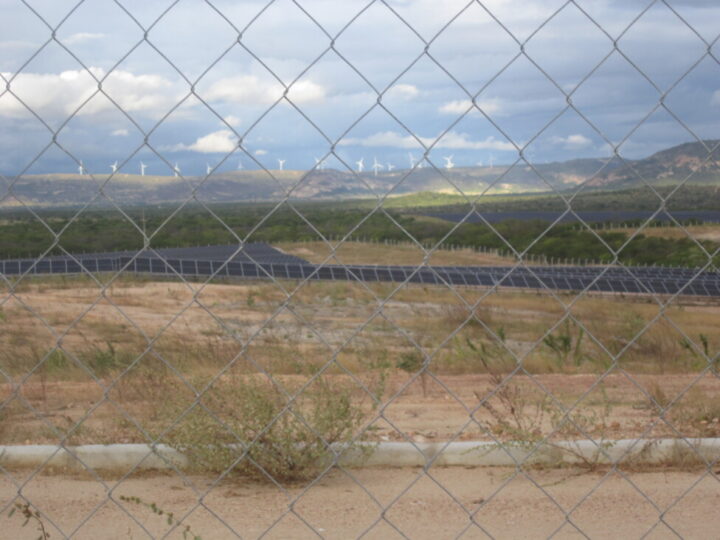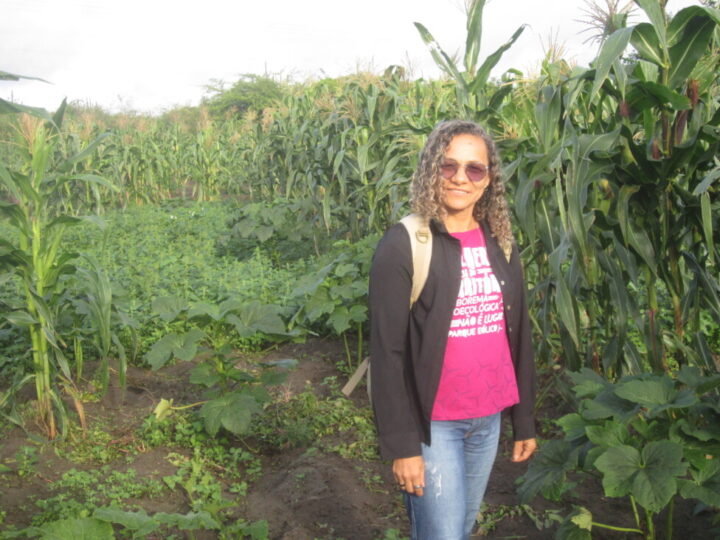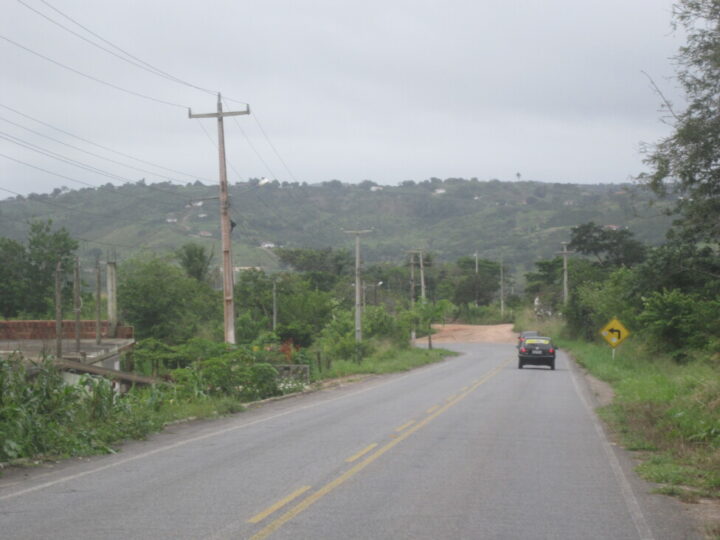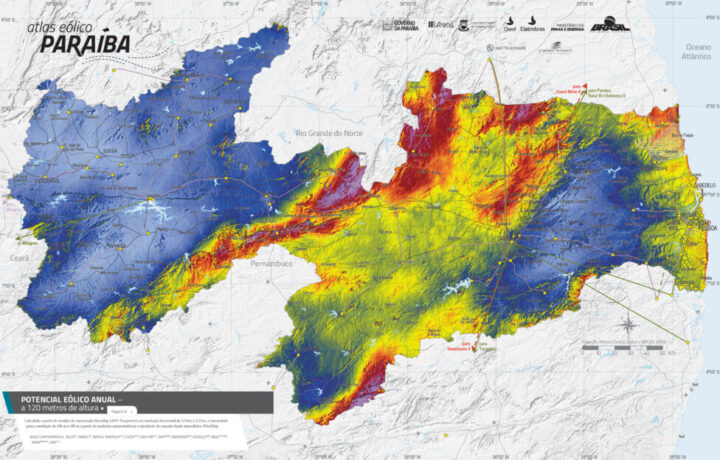The Dark Side of Wind and Solar Farms as Sustainable Energy in Brazil — Global Issues
SANTA LUZIA, Brazil, Jul 07 (IPS) – “Anxiety, insomnia and depression have become widespread. We don’t sleep well, I wake up three, four times a night,” complained Brazilian farmer Roselma de Melo Oliveira, 35, who has lived 160 meters from a wind turbine for eight years.
Her story illustrates the ordeal of at least 80 families who decided to hire a lawyer to demand compensation from the company that owns the Ventos de Santa Brigida wind farm complex in Caetés, a municipality of 28,000 inhabitants in the state of Pernambuco, in the Northeast region of Brazil.
Dozens of other families affected by the proximity of the wind towers have not joined the legal action, largely because they fear losing the rental income from part of their land where one or more wind turbines have been erected.
The company pays them about 290 dollars for each wind tower, which represents 1.5 percent of the electricity generated and sold, according to Oliveira. Those who were not offered or did not accept the lease are left with the damage and no profits.
Built in 2015 by the national company Casa dos Ventos and sold the following year to the British corporation Cubico Sustainable Investments, the set of seven wind farms, consisting of 107 wind turbines 80 meters high, has a total installed capacity of 182 megawatts, enough to supply 350,000 homes.
The wind energy boom has intensified in recent years in Brazil’s Northeast region, which accounts for more than 80 percent of the wind electricity generated in the whole country.

Wind power boom
This expansion will be accelerated by plans to produce green hydrogen, which requires a large amount of renewable energy for electrolysis, the technology of choice. The region’s enormous wind and solar potential, in addition to its relative proximity to Europe, the great consumer market of green hydrogen, puts the Northeast in a strong position as a supplier of the so-called fuel of the future.
As a result, large energy projects are proliferating in the region, which is mostly semiarid and almost always sunny. The giant parks have triggered local resistance, due to the social and environmental impacts, which are felt more intensely in the Northeast, where small rural properties are the norm.
Brazil currently has 191,702 megawatts of installed capacity, including 53.3 percent hydroelectric, 13.2 percent wind and 4.4 percent solar. The goal is for wind, solar and biomass to contribute 23 percent of the total by 2030, with the Northeast as the epicenter of the production of renewable sources.
“We are not against wind energy, but against the way these large projects are implemented, without studying or avoiding their impacts,” Oliveira said. Renewable sources are not always clean and sustainable, say activists, especially movements led by women in the Northeast.
“Because they are considered low-impact, wind and solar farms obtain permits for implementation and operation more quickly and at a low cost, without in-depth studies,” said José Aderivaldo, a sociologist and secondary school teacher in Santa Luzia, a municipality of 15,000 inhabitants in the semiarid zone of the Northeastern state of Paraíba.

“But solar energy has a greater impact, it is more invasive. A wind farm has little impact on livestock, which do lose a lot of space to solar, more extensive in terms of the land it occupies,” he told IPS.
His field of observation is the Neoenergía company’s Renewable Complex, a project that combines wind power, with 136 wind turbines in the Chafariz complex in the mountains, and 228,000 photovoltaic panels in the Luzia Park on the plains. The former generates more electricity at night, the latter during the day.
In total, they cover 8,700 hectares in Santa Luzia and three other neighboring municipalities and can generate up to 620.4 megawatts, most of it – 471.2 megawatts – coming from the wind in the mountains. They can supply electricity to 1.3 million housing units and avoid the emission of 100,000 tons of carbon dioxide gas, according to the company, a subsidiary of Spain’s Iberdrola.
One of the impacts was a reduction in the local capacity for the production of cheap protein from livestock farming adapted for centuries to the local ecosystem, in addition to extracting rocks for the construction of wind towers and damaging local roads with trucks for their transport, lamented João Telésforo, an engineer and retired professor from the public Federal University of Rio Grande do Norte.
“Neoenergía carried out all the socio-environmental impact studies rigorously in accordance with the country’s current legislation and global best practices. The distance between the homes and the wind turbines is in compliance with the law,” the company responded to IPS in writing, in response to questions about criticism of its activities.

“In addition, it only leases the land, without purchasing it, which means people stay in their homes and in the countryside, and owners receive payments according to the contracts, with transparency, contributing to income distribution and local quality of life,” it added.
Local complaints
But Pedro Olegario, 73, laments that the remuneration has declined, explained by the company as a result of a drop in the energy generated. “The wind is still blowing the same,” he protested.
His wife, Maria José Gomes, 57, complains about the noise, even though the nearest wind turbine is about 500 meters away from their house. “Sometimes I can only fall asleep in the wee hours of the morning with the window tightly closed,” she said.
The couple lives on their share of a 265-hectare property, inherited and divided between the widow and 17 children of the previous owner, on one of the mountains of the Seridó range, part of Santa Luzia.
The 18 family members split the income from four wind towers installed on their land.
Not everyone is unhappy
On the other hand, Pedro’s brother Severino Olegario, 50, has a positive view of the Canoas Wind Farm, which also belongs to Neoenergia. The 2019 construction made it possible for him to open a restaurant to feed 40 technicians of the company who installed the mechanical components.

“I sleep despite the noise and the remuneration is low because we had to divide it among a very large family,” he said. He also improved the road, which brings tourists to his restaurant on Sundays, after the construction work ended, and slowed the local exodus of people from the region.
About 1,000 families used to live in the three communities up in the mountains, due to the high level of production of cotton. But the cotton boll weevil (Anthonomus grandis) plague in the 1990s destroyed the crop and the value of the land.
“Today there are less than a hundred families left,” said Severino, who continues to grow some of the food that he uses to serve meals at his restaurant.
His perspective differs from the picture described by Oliveira to IPS by telephone from her rural community, Sobradinho, in Caetés, the result of a wind farm authorized before the government’s Brazilian Environmental Institute issued new rules in 2014.

Damage and unfavorable contracts
“There are cases of allergies that we believe are caused by the dust from the wind turbine blades, which also contaminates the water we drink, as it falls on our roofs where we collect rainwater in tanks,” Oliveira complained.
The alternative would be to buy water from tanker trucks which “costs 300 reais (62 dollars ) – too expensive for a family with two children who only harvest beans and corn once a year,” she explained, adding that growing vegetables and medicinal herbs is impossible because of the polluted water.
In addition to the audible sound, vibrations, infrasound (considered inaudible), shadow flicker (the effect of rotating turbine blades causing varying brightness levels and blocking the sun’s rays) and microparticles cause symptoms of “wind turbine syndrome,” according to Wanessa Gomes, a professor at the public University of Pernambuco, who is researching the subject with colleagues from the Oswaldo Cruz Foundation, Brazil’s leading academic public health institution.
Local families have also been living in fear since a blade broke and fell with a loud bang. Many take medication for sleep and mental illness, according to Oliveira, whose testimony aims to alert other communities to the risks posed by wind energy enterprises.
On Mar. 16, she took her complaints to the Women’s March for Life and Agroecology, organized by the Polo de Borborema in Montadas, a municipality of 5,800 people, about 280 kilometers north of Caetés.
The Polo is a group of rural workers’ unions in 13 municipalities in the Borborema highlands in the state of Paraíba, whose windy mountains are coveted by companies.
The women’s movement, with the support of the non-governmental Consultancy and Services for Alternative Agriculture Projects, mobilized 5,000 women this year, in its fourteenth edition, the second one focused on opposition to wind farms.
“Our struggle is to prevent these parks from being installed here. If many families refuse to sign the contracts with the companies, there will be no parks,” Marizelda Duarte da Silva, 50, vice-president of the Rural Workers Union of Esperança, a municipality of 31,000 inhabitants in the center of Borborema territory, told IPS.
“The contracts are draconian, up to 49 years and renewable by unilateral decision of the company,” said Claudionor Vital Pereira, a lawyer for the Polo union. “They demand unjustifiable confidentiality, charge fines for withdrawing and make variable payments for the lease depending on the amount and prices of energy generated, imposing on the lessor a risk that should only be assumed by the company.”
© Inter Press Service (2023) — All Rights ReservedOriginal source: Inter Press Service
Check out our Latest News and Follow us at Facebook
Original Source






